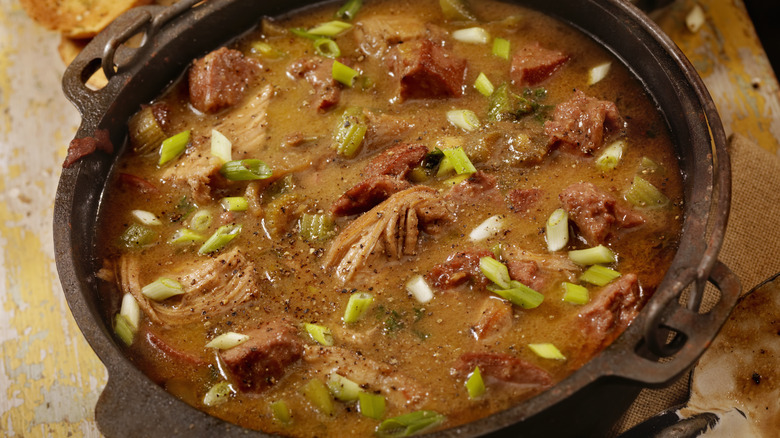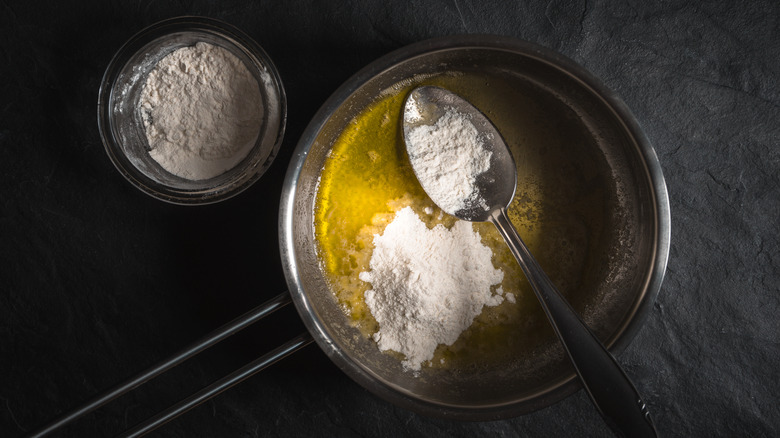For The Perfect Gumbo You Don't Overlook This Key Component
If you're visiting New Orleans, it's well known that eating a hot, hearty Creole gumbo should be on your itinerary. There are lots of little ways in which gumbos can be different from each other, but they follow a basic formula: A gumbo is a thick stew made with a mixture of meats (usually chicken and andouille sausage, along with seafood) and vegetables. Often, you'll see it served over rice, though don't mistake gumbo for the rice-based jambalaya, a sister dish. If you're making gumbo, then its thick, heavy quality is what sets it apart from other stews. But how exactly do you give it that quality?
In order to get some advice, Chowhound spoke exclusively with Darren Chabert, the chef de cuisine at the Saint John Restaurant (@saintjohnnola on Instagram) in New Orleans, Louisiana. According to Chabert: "The roux is the backbone of the gumbo!" A roux is a cooked mixture of flour and fat which can thicken a watery, liquid-heavy dish and give it more density and weight. That may sound simple, though Chabert has a more in-depth strategy when making roux for gumbo: "I make a milk chocolate-colored roux for seafood gumbo."
Avoid ruining your roux
If you've ever made gravy or béchamel sauce in the past, then you've worked with a roux before. It's slightly similar to a starch-based thickening agent called a slurry, but a roux is added early on and it plays a larger role in adding flavor to a dish than a neutral slurry. For example, a gumbo is typically made from a dark roux with smoky notes using oil as its fat, and gets its color by cooking the mixture until it takes on that deep chocolate hue — there's no actual chocolate involved. There are minor differences between the roux used to make gumbo in Cajun and Creole food: Rural Louisiana-style Cajun gumbo uses extra dark roux, while the roux in New Orleans-style Creole gumbo is cooked less and is softer and lighter as a result.
You have to be vigilant while making a dark roux, though, because your goal is to darken the mixture without overcooking and burning it. Typically, stirring it frequently while it's cooking is the best way to prevent a ruined roux. If you do burn it, is there any way to save it? According to Darren Chabert, it isn't worth the effort: "If you burn your roux, throw it out! There is no salvation for a burnt roux!" Flour and oil isn't difficult to find, so you're better off making a new roux.

